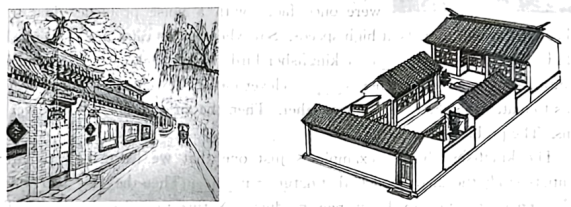
People say the real culture of Beijing lies in the culture of hutong and siheyuan. 【小题1】 true it is! They give an understanding of the old lifestyle of ordinary Beijingers. If you want to truly know the real life of Beijingers, a half-day hutong tour 【小题2】 (be) a good choice.
Starting during the Yuan Dynasty (1271-1368), hutongs are narrow (狭窄的) streets which 【小题3】 (form) by lines of siheyuan, and they are at the center of old neighborhood life in Beijing.
The word “hutong” comes from Mongolian and means “water well”. People in ancient times dug a well and lived around it, so “water well” became the name of the living area and then the name of the narrow streets. From the name of a hutong, you can guess its origin (起源). However, the meaning of hutong has cultural aspects (方面).
If the Forbidden City is 【小题4】 symbol of the Chinese royal (皇家的) family, then hutongs are the epitome (缩影) of the life of ordinary Beijing people. They are like museums of folk custom, showing the culture of Beijingers. Every hutong has its story 【小题5】 (tell). Neighbors in Beijing hutongs sit down over a cup of tea, catching up with each other’s play, shopping, and conversation.
Many famous operas and dramas are based on the theme of “hutong life”. A visit to hutongs by day plus a drama by the Beijing People’s Art Theatre in the evening will help you 【小题6】 (well) understand this basic part of life in Beijing. So don’t miss it.



